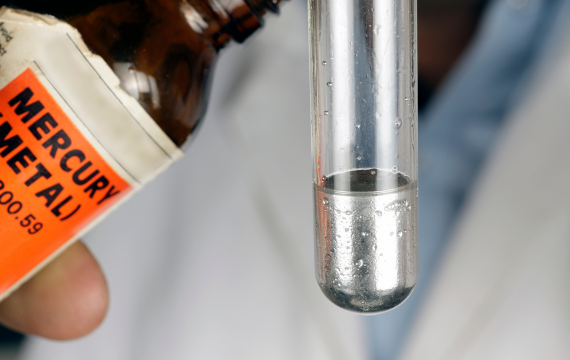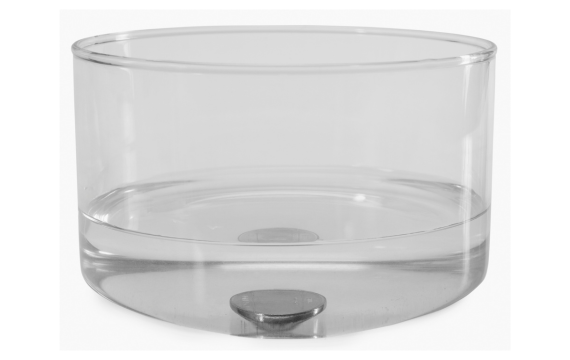Like other properties, knowing the density of mercury is critical in determining whether you can use it for any application or not.
In this guide, we will explore critical facts about the density of mercury such as the exact value
What is the Density of Mercury?
Mercury is a silvery metallic element that takes a liquid form when at standard conditions of pressure and temperature. With an atomic number 80, mercury has a density of 13.59 g/cm³ (grams per cubic centimeter) at room temperature.

Factors Affecting Mercury’s Density
Density describes a substance’s mass contained in a defined volume. As a physical property, it is affected by conditions like temperature, pressure and presence of impurities as follows:
· Temperature
An increase in temperature causes the expansion of mercury which results in a volume change (increase). Since density is expressed as mass per unit volume, and with the mercury mass unchanged, this change decreases the density of mercury.
Additionally, the coefficient of thermal expansion of mercury is comparatively higher than other solids. As a result, even small positive changes in temperature result in a decrease in density. Furthermore, as a liquid at standard temperature conditions, it exhibits changes in density when approaching freezing.
· Pressure
You find mercury displays considerable incompressibility at normal conditions. Consequently, pressure changes have an insignificant effect on its volume and thus density. However, extreme pressures can induce slight compression which can induce noticeable positive change in density.
Subjecting mercury to significant hydrostatic pressure like under water can marginally increase its density owing to a volume reduction. However, it will require considerable pressure to effect even a small change owing to the general resistance of liquids to compression.
· Impurities
The presence of chemical impurities in mercury can either positively or negatively affect density. This will be dependent on the nature of impurities and their concentration. Impurities could be in form of other metals, gases or foreign substances.

Measuring the Density of Mercury
Experimental Methods
Pycnometer
A pycnometer is a laboratory instrument used in the measurement of liquid density to high precision including mercury. You use a pycnometer to determine the mass of a known mercury volume before calculating density using the formula mass over volume.
The following steps are typical in determining mercury density using a pycnometer:
- Weigh the empty pycnometer and record the value.
- Fill it with mercury and take another weight measurement recording the value.
- Subtract the weight of the empty pycnometer from that when filled to obtain the weight of mercury alone. Record.
- Determine the mercury volume by reading the appropriate calibration marking.
- Determine the density of the mercury by dividing the mass measurement you obtained with the volume.
Hydrostatic weighing
Hydrostatic weighing utilizes the buoyancy method as provided by Archimedes’ principle to measure density. Usually used for solids, you can adapt it for liquids like mercury. When using hydrostatic weighing, you make a comparison of an objects weight in air to its submerged weight.
According to Archimedes’ principle, when you submerge an object in a fluid, a buoyant force acts on it. This force is equal to that of the displaced fluid. In undertaking hydrostatic weighing for mercury, the following steps are essential:
- Measure the weight of a solid object in air and record its value.
- Submerge the object in mercury measuring its weight by determining the displaced mercury’s weight.
- Determine the buoyant force by establishing the difference between the object’s weight in air and in mercury.
- Determine the object volume if unknown by using water displacement for instance.
- Calculate mercury density by substituting for the weight and volume values in the formula, density = mass/volume.
Challenges and Considerations
In measuring mercury density, you need to engage precise techniques and careful handling. This is because mercury has unique characteristics and is hazardous in nature. The following challenges and considerations are associated with measuring the density of mercury:
Challenges
- During evaporation even at room temperature, mercury releases toxic vapors capable of causing harm when inhaled.
- Mercury’s high density makes precise pouring into measuring devices challenging without spillage or bubbling.
- Mercury forms a convex meniscus which is likely to result in inaccurate reading of volume measurements.
- Small volume changes can result in relatively large errors when making calculations of density.
- Changes in temperature affect the volume of mercury affecting density measurements.
- Contaminants are easily trapped by mercury altering mass or volume readings, skewing density results.
Considerations
- Use protective gear such as gloves and goggles in a well-ventilated area to minimize exposure to mercury vapors.
- Undertake controlled pouring by utilizing a funnel to carefully transfer mercury into measuring devices.
- Use pycnometers to precisely measure volume measurements of mercury.
- Perform density measurements at a known constant temperature to avoid thermal expansion errors.
- Consider using properly calibrated volumetric equipment, for all measuring devices.
- During buoyancy measurement, ensure the balance can measure small weight changes.
- Prevent contamination of mercury by storing in sealed containers remembering to use proper cleaning techniques.
Conclusion
Understanding the density of mercury is crucial in vast application areas like making measuring devices like barometers and thermometers. It is also imperative to understand mercury properties when undertaking metallurgical operations and other industrial uses like making switches.
You can also compare densities of other materials such as carbon density, galvanized steel density, density of tungsten, silicone density, titanium density, stainless steel density and aluminum density.




